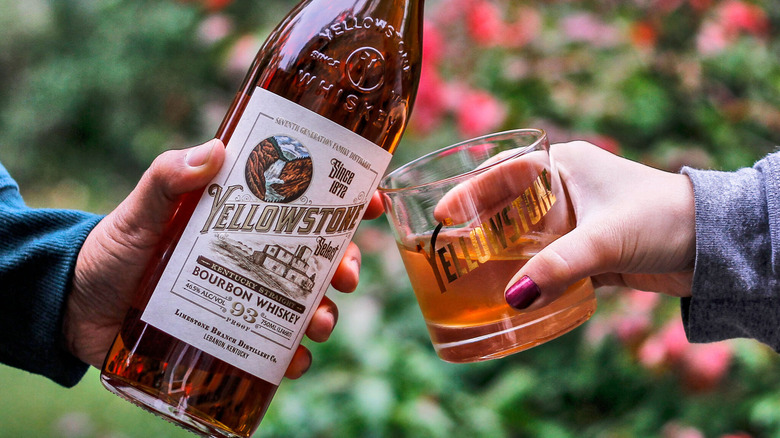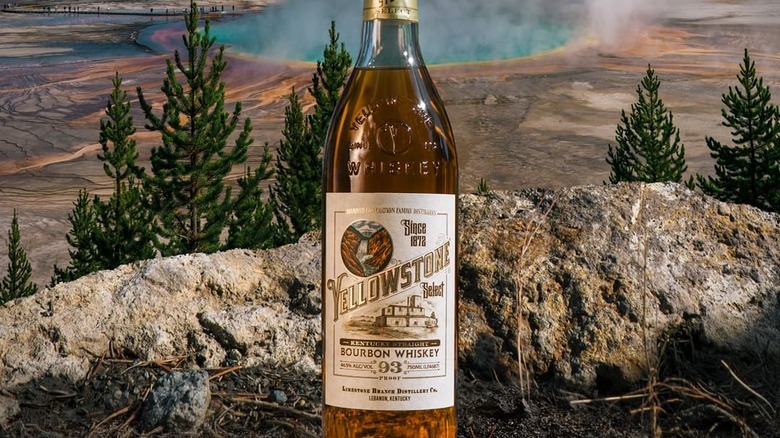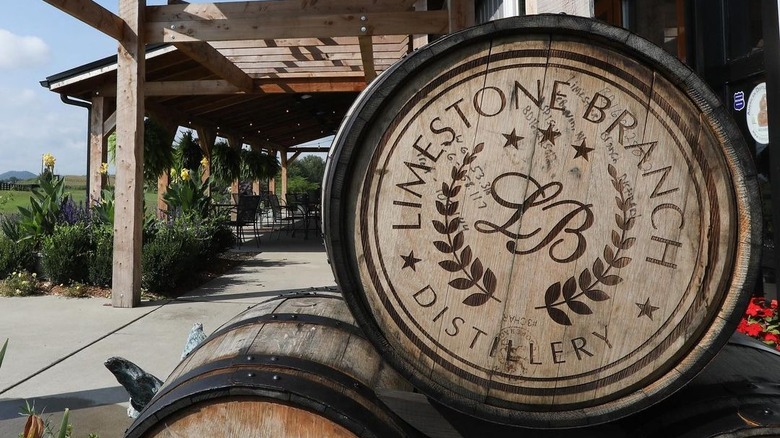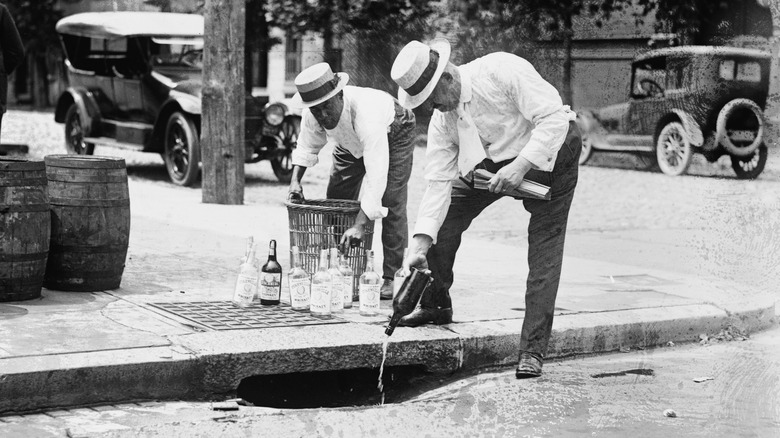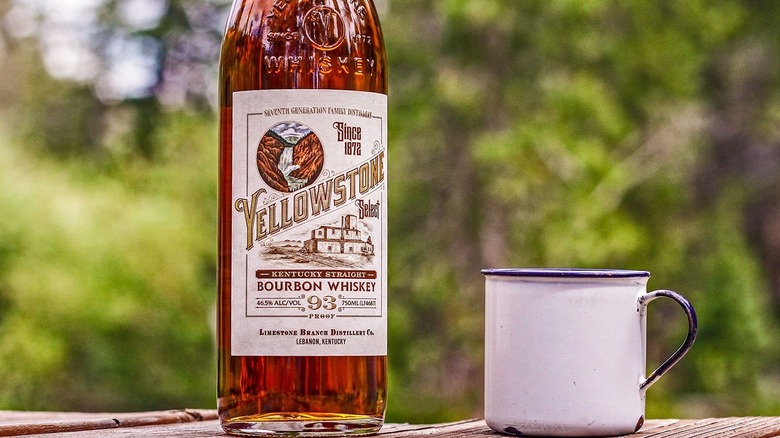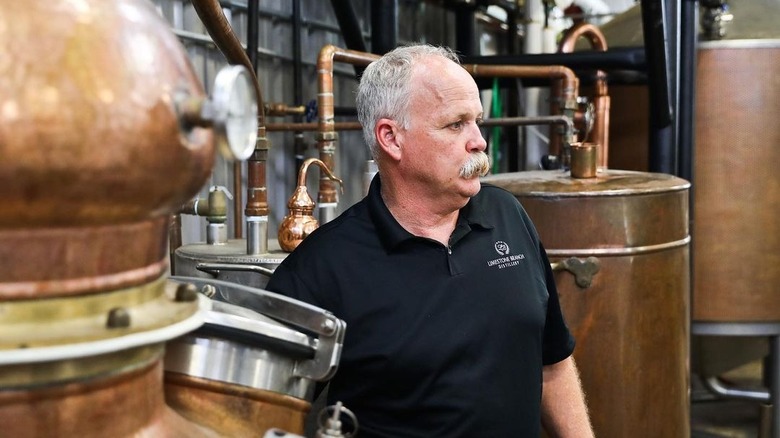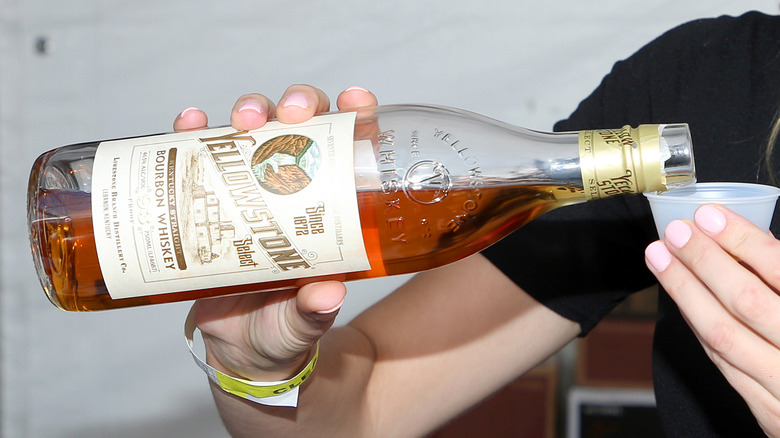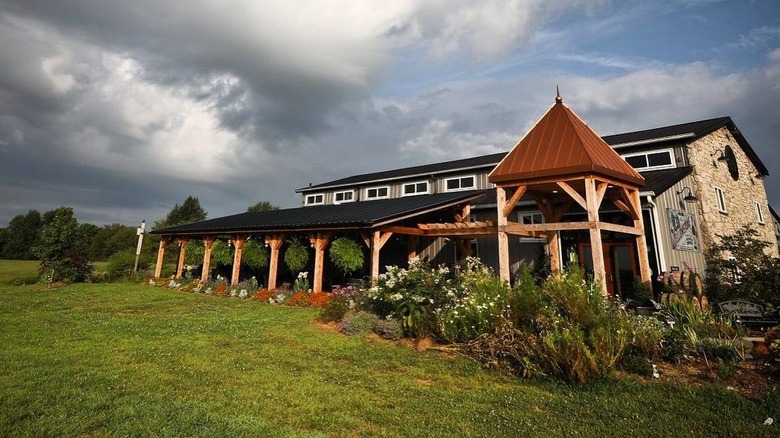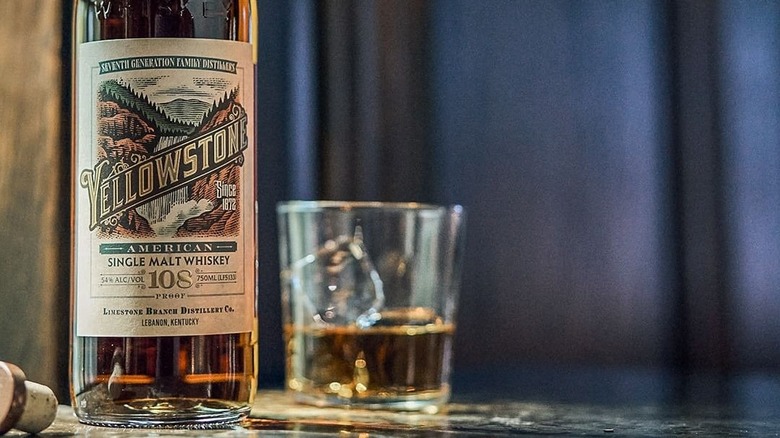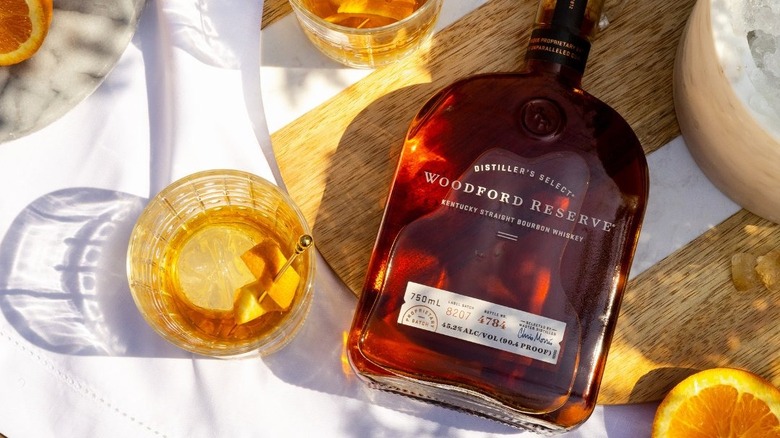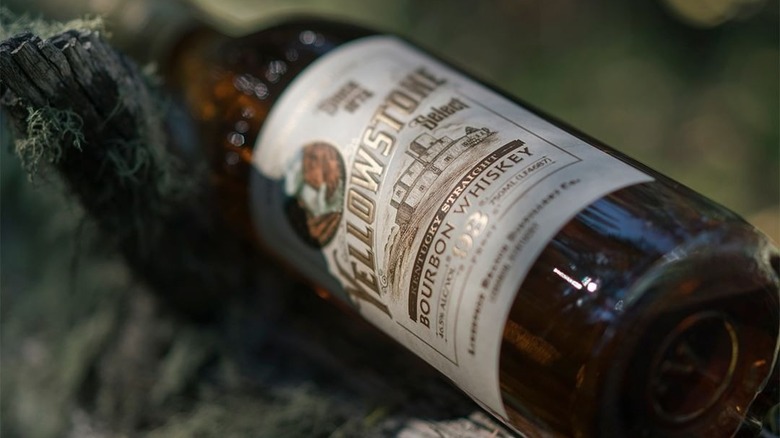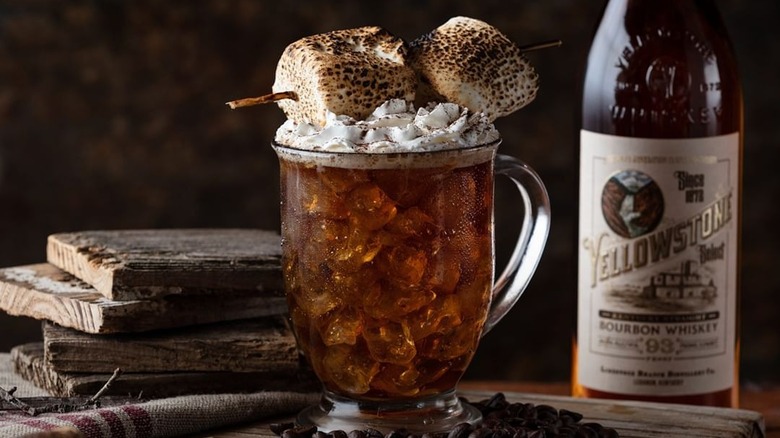Yellowstone Select Bourbon: The Ultimate Bottle Guide
The world of bourbon is littered with brands that have a fascinating history, and Yellowstone is no different. Coming from the Limestone Branch Distillery, its expressions are the result of incredible tradition and two famous bourbon families. The modern-day iteration of Yellowstone is one that perfectly marries this rich history with bold innovation.
Crafted in the heart of Kentucky, its flagship Yellowstone Select bottle is a fantastic bourbon that shares the raw spirit of the national park it was named after. This whiskey is an impressive bottle that shines a beautiful light on the classic bourbon tasting notes of caramel and oak; with a touch of spice and smoke, it has plenty of depth, as well.
Whether you're a seasoned connoisseur or a newcomer to bourbon, you may be interested in the nuances and complexities that make Yellowstone Select stand out in the world of American whiskey. If you'd like to explore the meticulous process in which this spirit is crafted (and how it compares to its rivals) while expanding on its storied past, we've compiled this comprehensive bottle guide to assist you. Soon enough, you'll be powered with everything you need to know about Yellowstone Select bourbon.
It's named after the national park
Yellowstone bourbon draws its name from one of America's most famous locations: Yellowstone National Park. Yellowstone (the park) became legally protected in 1872, which was the same year the whiskey brand was created. Inspired by the excitement of the first national park in the U.S., the bourbon makers decided to label the new brand Yellowstone.
While the park and its namesake bourbon share a few similarities — notably a commitment to quality and tradition — the Yellowstone brand's association with the park didn't start and end in 1872. After all, Yellowstone bourbon takes great pride in its efforts to help conserve special places in nature. Since 2018, the brand has partnered with the National Parks Conservation Association (NPCA) to support its mission to protect all national parks — not just Yellowstone.
Since the partnership began, Yellowstone has donated close to $500,000 to the NPCA and even received the association's annual National Park Defender award in 2023. By taking noble steps to ensure the nation's parks thrive for many years to come, the bourbon brand has shown that its name wasn't just about mirroring the timeless beauty and rugged character of Yellowstone National Park.
History of Yellowstone bourbon
The story begins in 1872 when J.B. Dant created the first Yellowstone bourbon. Dant was a prominent figure in the bourbon industry and part of one of the most famous bourbon-making families in the early days of American whiskey. Not long after its creation, the spirit gained recognition for its distinctive flavor and craftsmanship, and was sold by the company Taylor & Williams until well after the end of Prohibition. Unfortunately, the Second World War hit the company hard, and Yellowstone was sold to Glenmore Distilleries in 1944, which would act as custodians of the brand until 1991.
By that time, the declining popularity of bourbon following the 1960s had caused significant challenges for the industry — and Yellowstone wasn't immune. The bourbon brand had become drastically weakened by the 1990s, leading Glenmore to sell it to United Distillers in 1991. United Distillers then sold Yellowstone to Heaven Hill a mere two years later in 1993, before the brand was sold again that same year to the David Sherman Corporation (which eventually became Luxco in 2006).
In 2015, Luxco bought a percentage of the Limestone Branch Distillery, which brings us to the present day. The distillery was given the Yellowstone brand as part of the transaction — and, thankfully, a new and dedicated home for its signature Yellowstone Select bourbon.
It survived through Prohibition
Prohibition was disastrous for the whiskey industry. However, a few distilleries managed to survive despite the restrictive laws — thanks in part to a clause that some companies were able to take advantage of. Under the Volstead Act (which enforced Prohibition), physicians were allowed to prescribe medicinal whiskey for various ailments. For this very reason, some distilleries, including Brown-Forman – which sold Yellowstone at that time on its behalf for a fee — were allowed to continue production or sell existing stocks.
Physicians were seemingly more than willing to readily prescribe whiskey for a wide range of ailments — whether they were genuine or not. While treating the likes of anxiety or insomnia with alcohol wouldn't be recommended nowadays, it was a great reason to get a prescription during Prohibition. This practice allowed distilleries to maintain a semblance of operation during the period, although the challenging circumstances undoubtedly affected the production methods and quality control.
When Prohibition was repealed in 1933, those distilleries that had weathered the storm through a blend of necessity and innovation (including the ones making Yellowstone) transitioned back to conventional whiskey production. Many brands have expressions based on pre-Prohibition recipes in the 21st century, and you can even make an array of pre-Prohibition cocktails yourself.
How Yellowstone fell from grace
In the 1960s, Yellowstone proudly touted itself as Kentucky's number-one-selling bourbon and enjoyed huge popularity for its quality. Yet, in the modern day, it didn't even make our list of the most popular Kentucky bourbons. This begs the question: what happened? Well, Yellowstone's popularity in the '60s was helped in part by the general love of bourbon during the decade (along with its commitment to high standards). It was a competitive market, but Yellowstone stood above them all, and that popularity continued into the '70s.
Unfortunately, when the 1980s came along, the bourbon landscape shifted significantly. Yellowstone wasn't the only brand to suffer, of course, as the popularity of bourbon fell sharply at that time due to several factors. The biggest was a change in consumer preferences for other spirits such as vodka and tequila. While bourbon had been the dominant force before, it now faced the challenge of competition from a wide range of alcoholic choices, including a surge in the popularity of Scotch whiskies.
Thankfully, the tide eventually turned for bourbon. This was helped by the growing Japanese market (and the likes of Blanton's Single-Barrel) until high-quality bourbon became popular in the U.S. once again. Of course, while some brands recovered over time, Yellowstone didn't, which led to it changing hands several more times (as we previously mentioned). In fact, it wasn't until a couple of famous names got their hands on the Yellowstone brand that it began to thrive again.
It's made by descendants of the Jim Beam family
The famous names we just mentioned are brothers Paul and Stephen Beam – or members of the Beam family. Yellowstone started its history under the guidance of the Dant family, and its custodians are now the most famous whiskey family of them all. Though the brand already had a rich heritage, the Beams' influence has further underscored that.
Seven generations on from the legendary Jacob Beam, the brothers opened the doors to a new distillery in 2011. They made a few different spirits before getting the chance to take on the Yellowstone name in 2015. Stephen and Paul have used their wealth of experience and deep understanding of whiskey to craft Yellowstone bourbon in an effort to restore its level of popularity. They've been aiming to do so without using their family name, as well, simply stating on each bottle of Yellowstone Select that it's made by "Seventh Generation Family Distillers."
With every sip of this bourbon, you can think about the extraordinary history that goes into each bottle. The brothers have carried the Beam torch forward alongside Jim Beam's line of fantastic whiskeys – and Yellowstone Select is more than worthy of inclusion beside that more famous bourbon brand.
How is Yellowstone Select Bourbon made?
Despite the bourbon industry being highly regulated, each distillery still likes to do things its own way — and Limestone Branch is no different. The mash bill used for the Yellowstone Select comprises 75% corn, 13% rye, and 12% barley. Not so coincidentally, this is the same mash bill used by Jim Beam, indicating the Beam brothers wanted to follow tradition.
Limestone Branch starts the process with an open cook of white heirloom corn. It cooks each ingredient in the mash bill in separate stages, lowering the temperature each time an ingredient is added. Once the yeast is pitched in, the mixture will ferment for around 72 hours. While bourbon producers can use column or pot stills for distillation, Limestone Branch uses the latter.
"Pot stills provide a richer quality spirit before they even hit the barrels," as Stephen Bream told The Glencairn Glass – and who are we to disagree with a member of the Beam family? After distillation, the heart of the spirit is placed in new charred oak barrels to mature. Yellowstone Select bourbon comes from a combination of barrels aged four and seven years and is blended until the whiskey reaches the perfect taste and consistency.
Its yeast was reclaimed through DNA
While we noted yeast is commonly used to make whiskey, every distillery uses its own version (Four Roses bourbon has five distinct strains, for instance). But the way Limestone Branch settled on the yeast strain for Yellowstone is incredibly unique. Rather than creating a new yeast, the Beam brothers leaned into their rich family history to reclaim a yeast strain through DNA – providing them with the same strain used by their grandfather and great-grandfather.
The Beam brothers managed to accomplish this incredible feat after finding yeast from an old yeast jug displayed at the Oscar Getz Whiskey Museum in Kentucky. Remarkable story aside, this was an ingenious move given how important yeast is to the whiskey-making process. You can't make alcohol without yeast, after all, since it acts as the catalyst for fermentation. Whether yeast is pitched in or develops naturally, it transforms sugars found in the grain into alcohol (which also directly influences the final product's flavor profile).
By using a yeast strain with a lineage dating back generations, Yellowstone Select pays homage to its heritage while imparting unique and historical nuances. This iconic strain of yeast greatly contributes to the distinctive character and depth of flavor that defines all of the brand's whiskies — not just the Yellowstone Select.
What does Yellowstone Select taste like?
We've talked a lot about the history of the Yellowstone Select, but what exactly does it taste like? For starters, since it's a blend of bourbons aged for four and seven years, it doesn't have the longest maturation — but it's enough to give the whiskey plenty of depth and flavor. Before your first sip of Yellowstone Select, you'll be greeted by a highly pleasant nose. There's a delightful fusion of sweet and spicy notes, as well as rich caramel and vanilla intertwining with toasted oak. The aroma welcomes you into the tasting experience, and the palate doesn't disappoint.
You'll be greeted by a luscious level of sweetness, with butterscotch taking center stage. In addition to the flavor notes we've mentioned so far, you'll also find more nuanced notes of dried fruits (such as apricots and figs) along with a peppery spice and subtle smokiness. All things considered, it's an impressive flavor profile for a mid-priced bourbon. The oak and vanilla notes remain in the finish, accompanied by a gentle warmth to give you a satisfying conclusion. There may be better whiskeys out there at higher prices, but there's no doubt Yellowstone Select is an excellent bourbon you'll surely enjoy.
Yellowstone Select vs. Yellowstone American Single Malt
As of February 2024, there are only two consistent releases under the Yellowstone brand: the Yellowstone Select, and the American Single Malt. Now, to be clear, we can't say which of these whiskeys is better. They're two very different expressions, so it all comes down to personal preference. Additionally, while American single oaks remain rare, they're gaining in popularity — and Yellowstone's American Single Malt is a wonderful alternative for those who traditionally love Scotch whisky.
As the name suggests, the American Single Malt is made from 100% malted barley (just like single malt Scotch whiskies). This gives it a much different flavor profile than Yellowstone Select, though one that works perfectly. You get the expected rich malt sweetness, of course, but there are other notes on the palate. This includes a significant influence of pear, along with stone fruits, caramel, and oak.
The main difference from the Select is that it doesn't have the same breadth of sweet and spicy notes. However, the American Single Malt does offer a more nuanced and malt-forward experience. If you're a bourbon lover, we recommend trying the Select first before exploring the brand's other expressions. Of course, there are millions of people out there who love both bourbon and malt whiskeys — so there's no harm in grabbing a bottle of each!
Yellowstone Select vs. Woodford Reserve Distiller's Select
While Yellowstone Select has a very different flavor profile from the brand's American Single Malt, the Select is quite comparable taste-wise to Woodford Reserve Distiller's Select. Produced by the historic Woodford Reserve Distillery, the Distiller's Select is loved by many for its full-bodied character and rich palate of dried fruit, toasted oak, and a subtle hint of chocolate. It's a smooth bourbon and full of flavor, making it one of the most popular bourbons in the world.
The biggest difference between the two is that Yellowstone Select embraces the classic bourbon palate with an impressive balance of sweetness and spice. Woodford Reserve, on the other hand, leans towards more complex and layered flavors. The Woodford Reserve Distiller's Select also has the benefit of mass production, so it's generally sold at a slightly cheaper price than Yellowstone Select.
Now, there's no denying Woodford Reserve is more famous and well-known than Yellowstone Select ... but is it better? Well, yes (at least slightly). Still, both of these spirits are great mid-priced bourbon options. For those looking for a classic and accessible bourbon, the Yellowstone Select is highly recommended. But when you want a bit more nuance and sophistication, go for the Woodford Reserve Distiller's Select.
Is Yellowstone Select expensive?
The Yellowstone Select perfectly balances both quality and affordability. It's not necessarily a budget bourbon — with an average price of a little over $40 – but it's not exactly a premium spirit, either. Sitting in that mid-range pricing spectrum, it has an accessible price tag that makes it a great choice when you're buying liquor for your home bar. Now, given it's not too expensive, the crucial question becomes: Does Yellowstone Select provide good value for its cost? We'd say the answer is yes.
It's important to remember this whiskey is made at the Limestone Branch Distillery, which isn't one of the larger whiskey makers in Kentucky. This means it doesn't have the benefit of offering mass-produced bourbons at a cheaper price. Considering that, Yellowstone Select stands up well to many of its similarly priced rivals.
If you've never had this expression before, it's well worth trying a bottle. You'll enjoy a great bourbon that marries tradition and innovation without breaking the bank. We think the price is fair, even if other great-tasting bourbons (such as the Woodford Reserve) are of similar quality but usually a little cheaper. Still, for those looking for something different from the more famous brands out there, Yellowstone Select is worth every cent.
How to drink Yellowstone Select
Yellowstone Select is a well-crafted and versatile bourbon — which means there's a myriad of ways it can be savored. Whether you prefer the simplicity of sipping it neat or enjoy experimenting with mixers and cocktails, you shouldn't feel guilty about having Yellowstone Select in any way you like.
Of course, as with any bourbon, we'd recommend trying it neat at least once to fully appreciate its character. This expression has plenty of nuanced flavors that can only be fully appreciated by itself. With a proof of 93, you can even add a few drops of water to see how it opens up the tasting notes. Yellowstone Select is equally delightful with ice for those who enjoy a chill in their drink. If you don't want your bourbon to be diluted quickly, using a large ice ball instead of cubes is a great idea given the reduced surface area.
Yellowstone Select's versatility extends to mixing drinks, too, and makes an excellent choice for several cocktails. You can mix it in a classic Old Fashioned or find other creative ways to upgrade your bourbon at home. Yellowstone Select is an adaptable bourbon that can be used in any setting, so how you choose to enjoy this whiskey ultimately depends on your personal preference.
